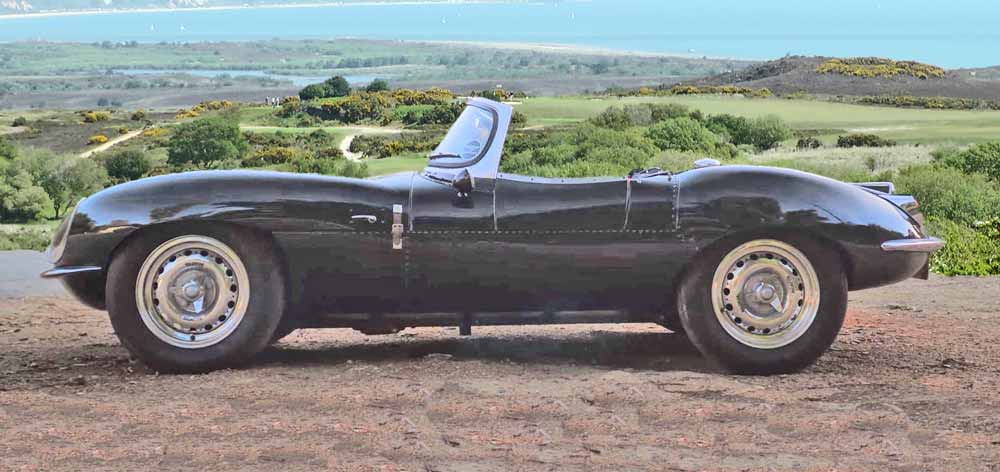
Fair enough, a nought to 60 time of seven seconds and a top speed of over 150 mph may not seem very sensational nowadays but back in 1957, that's more than 60 years ago, it was phenomenal performance! Jaguar had created a racing car with a straight six cylinder overhead camshaft engine pushing out 250 brake horsepower that had the average petrol head positively drooling.
The problem was that the company had decided to pull out from racing! There was still, however, 25 part completed cars in their Browns Lane factory, representing a considerable investment; what were they to do with them? The answer was to convert them into road cars, particularly for the American market where there was still a huge demand for a high-performance machine with sex appeal.
However disaster then befell the company. There was a fire at the factory on 12 February; nine of the cars were destroyed leaving 16 only available for sale.
The absolute minimum of adaptation was made. The distinctive rear fin, which helps to glue the car to the race track, was removed. A passenger door and seat were fitted. A canvas roof was provided to keep the worst of the weather out, and a windshield went on as well as bumpers. A few minor tweaks were made to get the car to comply with American legislation and they went on sale to an adoring public. 16 private buyers (including movie legend Steve McQueen) snapped them up.
It has to be remembered that these were racing cars, which were adapted to road use, rather than road cars that just happened to be particularly fast and powerful! They needed careful handling; boy racers would have found them too much of a handful. Performance was exhilarating; and the braking was up to the mark as well, with disc brakes (almost unheard-of in those days) all round. The monocoque chassis sat on a rigid subframe providing just the right amount of stiffness but comfort was very much a secondary consideration, although the buyers didn't seem to be over worried about this! There was a distinctive off centre bulge in the bonnet, to accommodate the engine which had to be tilted slightly to get it to fit.
In 2016 Jaguar announced that they were going to rebuild the nine cars that were destroyed in the fire. At the time of writing this they have not appeared on the market yet but when they do the price is expected to be well north of £1 million each. There is not expected to be any shortage of potential buyers even at that price!